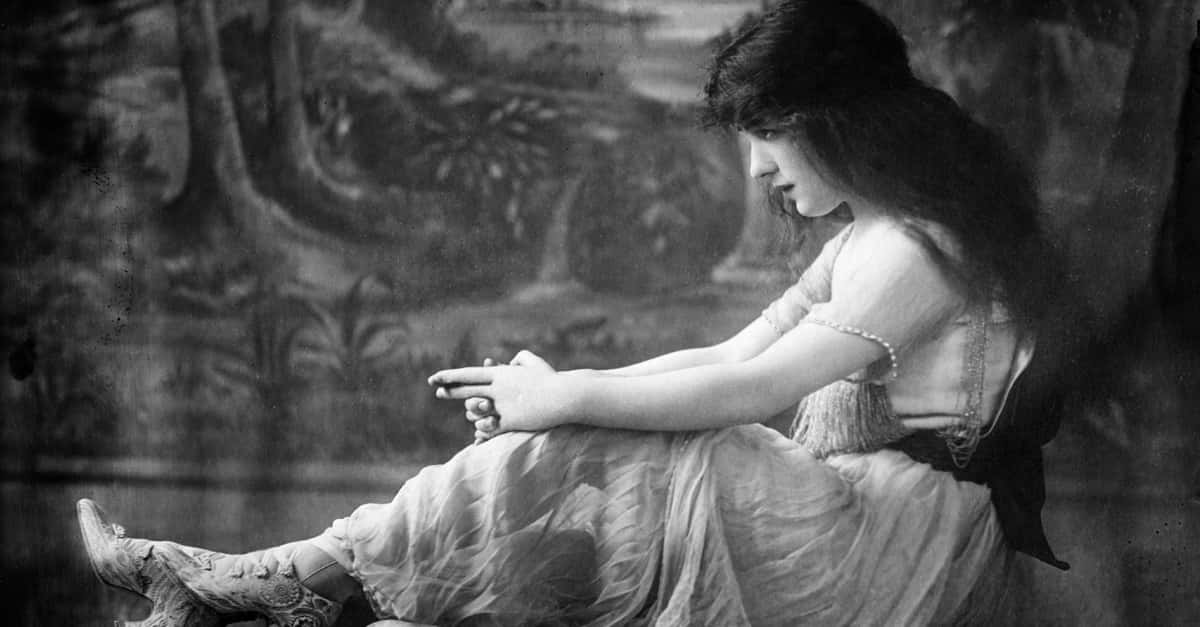Evelyn Nesbit lived 1,000 lives in her time on Earth. Her childhood was stricken with both tragedy and poverty before she went on to become one of the most well-known faces of the Gilded Age—she was essentially a supermodel before that term even existed. She was shuffled from the care of her mother to a sinister elder Svengali figure to a handsome future movie star to an ultra-controlling husband—who would go on to commit a disturbing crime that culminated in what was, at the time, called the “trial of the century.” And all this before she turned 21. It may seem like something out of an F. Scott Fitzgerald novel—but it was her real life.
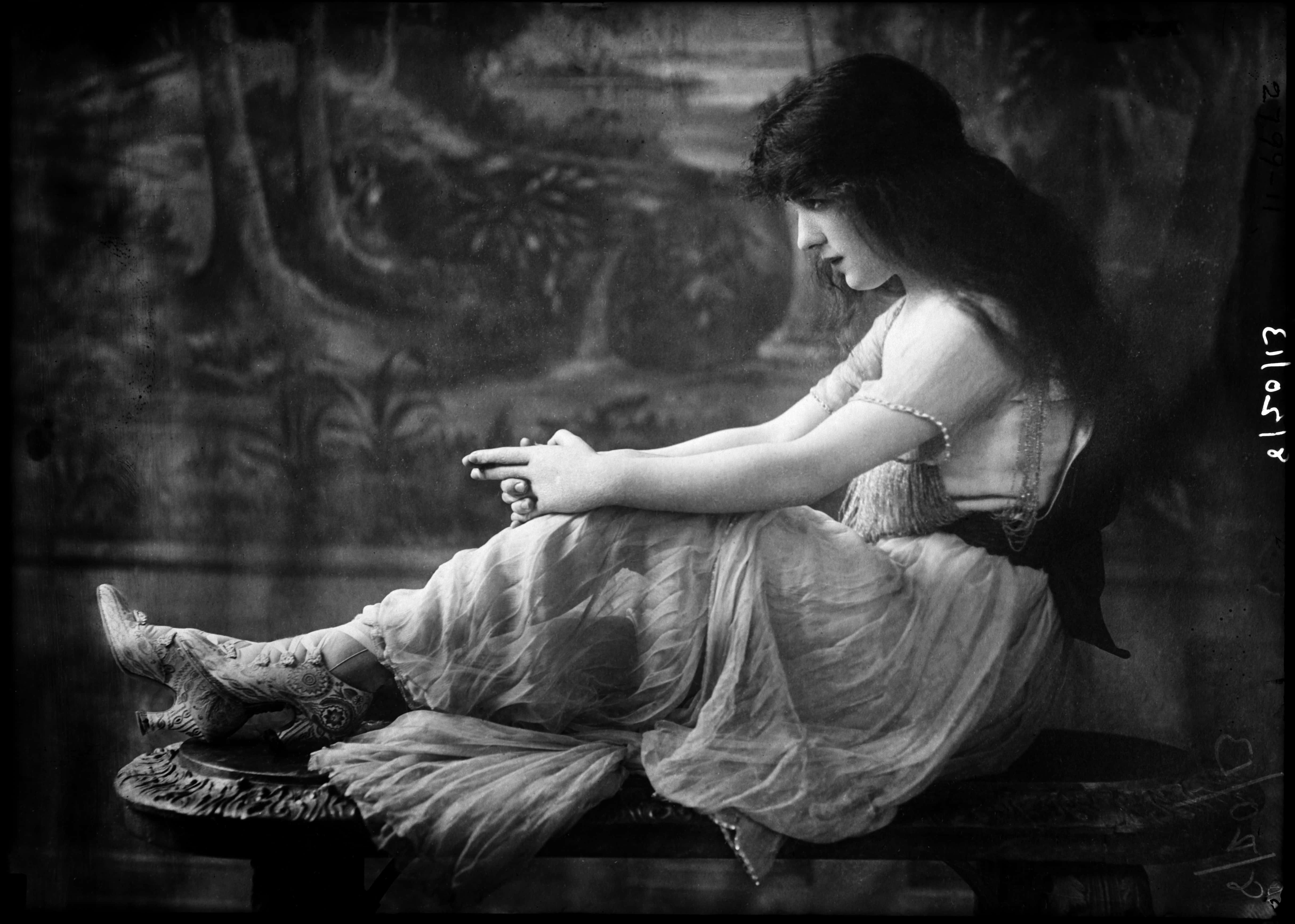 Wikimedia Commons
Wikimedia Commons
Things weren’t always so dramatic for Nesbit. She was born in Tarentum, Pennsylvania to Winfield Scott Nesbit and his wife, Evelyn Florence. As a young girl growing up in the final years of the 19th century, she doted on her beloved father, who encouraged her love of reading. However, tragedy struck when she was 10 or 11 and her father suddenly died. Evelyn, her mother, and her younger brother Howard were left without a dime, their family home and possessions taken to repay Winfield’s debts. Nesbit’s mother tried her best to support the family—taking in lodgers, making dresses—but to no avail. Nesbit and her brother were eventually sent away to an aunt, and then to another family. Finally, when Nesbit was 14, she and her brother went to live with their mother again, who got them full-time jobs at the department store where she worked in Philadelphia.
It was here that Evelyn began to turn her family’s fortune around. She attracted the attention of a local artist, who asked her to pose for a portrait. Soon after, other artists began to ask to hire her—her mother agreed to her budding modeling career, but wasn’t there to chaperone it, as she’d once again left her children behind, moving to New York City in 1900. The artists in Philadelphia encouraged Nesbit to try her hand at modeling in New York, but her mother initially refused to help her, only conceding to let her children move and live with her a few months later. Nesbit’s mother had hoped to become a dress designer, but it became clear that if she wished to keep a roof over her head, it would be wiser to focus her time and attention on her daughter’s burgeoning modeling career. She became Nesbit’s manager, but was far from protective—she actually modified her daughter’s birthdate to make her seem older, circumventing labor laws. In a Kris Jenner-esque move, she claimed to have never allowed her teenaged daughter to pose nude—but the semi-nude portraits of Nesbit provide evidence to the contrary.
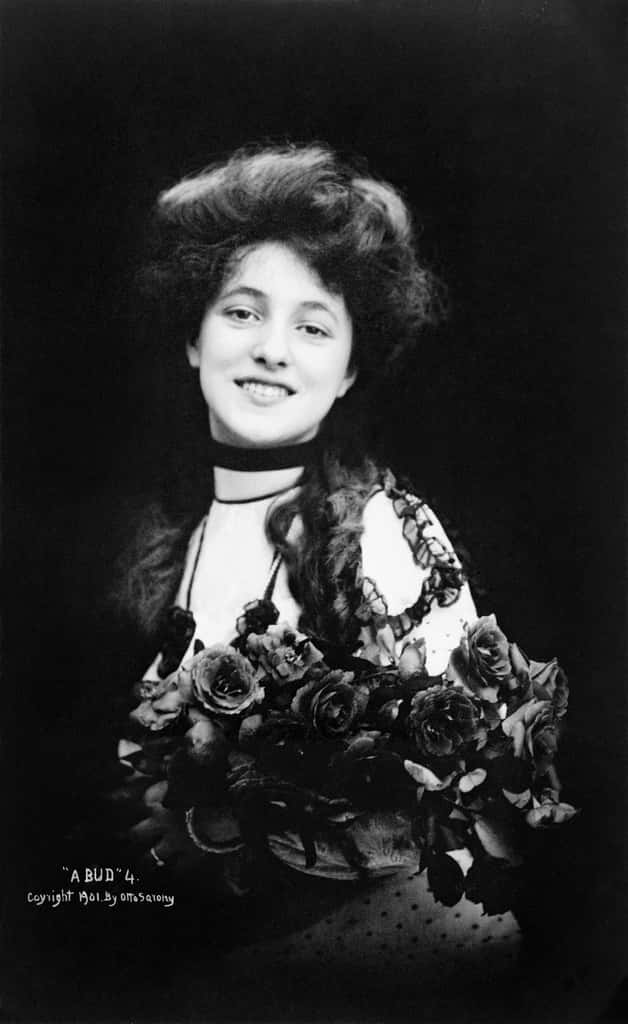 Flickr
Flickr
Nesbit, just a teen, was thrust into the center of the New York social scene in the glamorous Gilded Age. Although she had her mother as manager, she couldn’t rely on her for the normal type of parental care and protection. Her stunning looks guaranteed that she quickly became one of the most in-demand models of the era, and soon, her face was everywhere—in portraits painted by prestigious artists, on the covers of popular woman’s magazines like Vanity Fair and Harper’s Bazaar, in calendars, on souvenir items, and more.
Nesbit may be perhaps best known as one of the original “Gibson Girls," a product of artist Charles Dana Gibson's illustrations of the Gilded Age's ideal feminine figure. The Gibson Girls were supposed to represent the increased freedom of women from stiff Victorian norms, but weren’t explicitly political or tied to the suffragette movement. If they belonged to the late 1990s, they would’ve been more "Girl Power" than "Riot Grrl." Gibson drew Nesbit for his piece “Woman: the Eternal Question,” based on a question posed by Sigmund Freud: “What do women really want?” As the iconic face of one of the Gibson Girls, Nesbit’s fame as a model was immeasurable, but by this point, even though she was still just a teen, she’d already been working for a couple of years. Nesbit was tiring of holding poses every day for hours upon hours. She wanted to move.
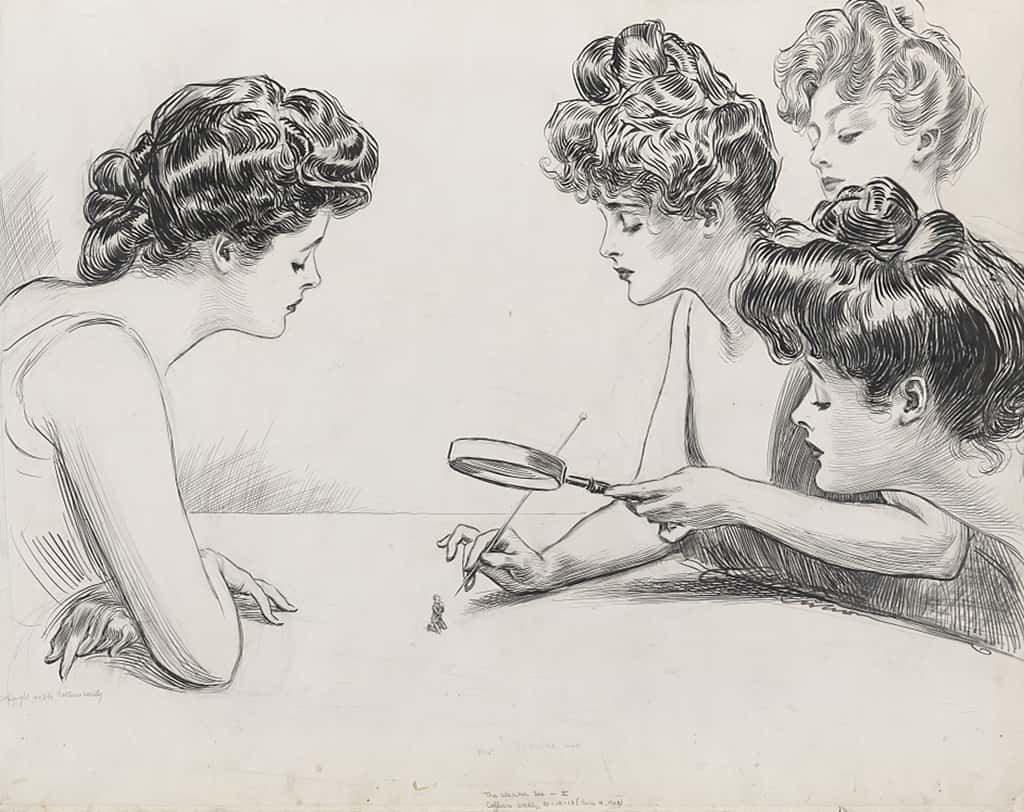 Wikimedia Commons "The Weaker Sex," Charles Dana Gibson. Gibson Girls examining a man under a magnifying glass.
Wikimedia Commons "The Weaker Sex," Charles Dana Gibson. Gibson Girls examining a man under a magnifying glass.
Nesbit convinced her mother to let her join the chorus line of a popular play on Broadway called Florodora. It was here that she caught the eye of prominent architect Stanford White—a relationship that would come to define the rest of her life, even after she got away from it. Although married and in his late 40s, White immediately took a liking to Nesbit, then 15 or 16. White kept a number of apartments around the city for entertaining friends…and young women. The first of these residences that Nesbit was invited to, by a friend on the chorus line, was located above the original location of the famous FAO Schwarz toy store. White fed the two girls lunch and then showed Nesbit a room where he’d installed a red velvet swing, which he encouraged her to try. Nothing untoward happened that day, but White soon began to make a very serious effort to groom Nesbit and isolate her from her family.
White had Nesbit and her family move into the Wellington Hotel, but soon after, he arranged for her brother to be enrolled in military academy away from the city, and encouraged Nesbit’s mother to take a trip to see friends in Pittsburgh. He promised to keep an eye on Evelyn, and her mother trusted him. It was a disastrous mistake. One night, in Smith’s apartment, he got her drunk and brought her to a room where the walls and ceilings were covered in mirrors. She subsequently lost consciousness, but when she woke up, it was clear what had happened. Although she’d described White as “appalling” and "terribly old" upon their first meeting, she was alone, separated from her family, reliant upon this man. The pair continued to see each other for months, but both of their eyes began to wander. Despite the obvious imbalance of power in their relationship, Nesbit was angry when she found White’s “little black book,” full of tales of dalliances with other young women.
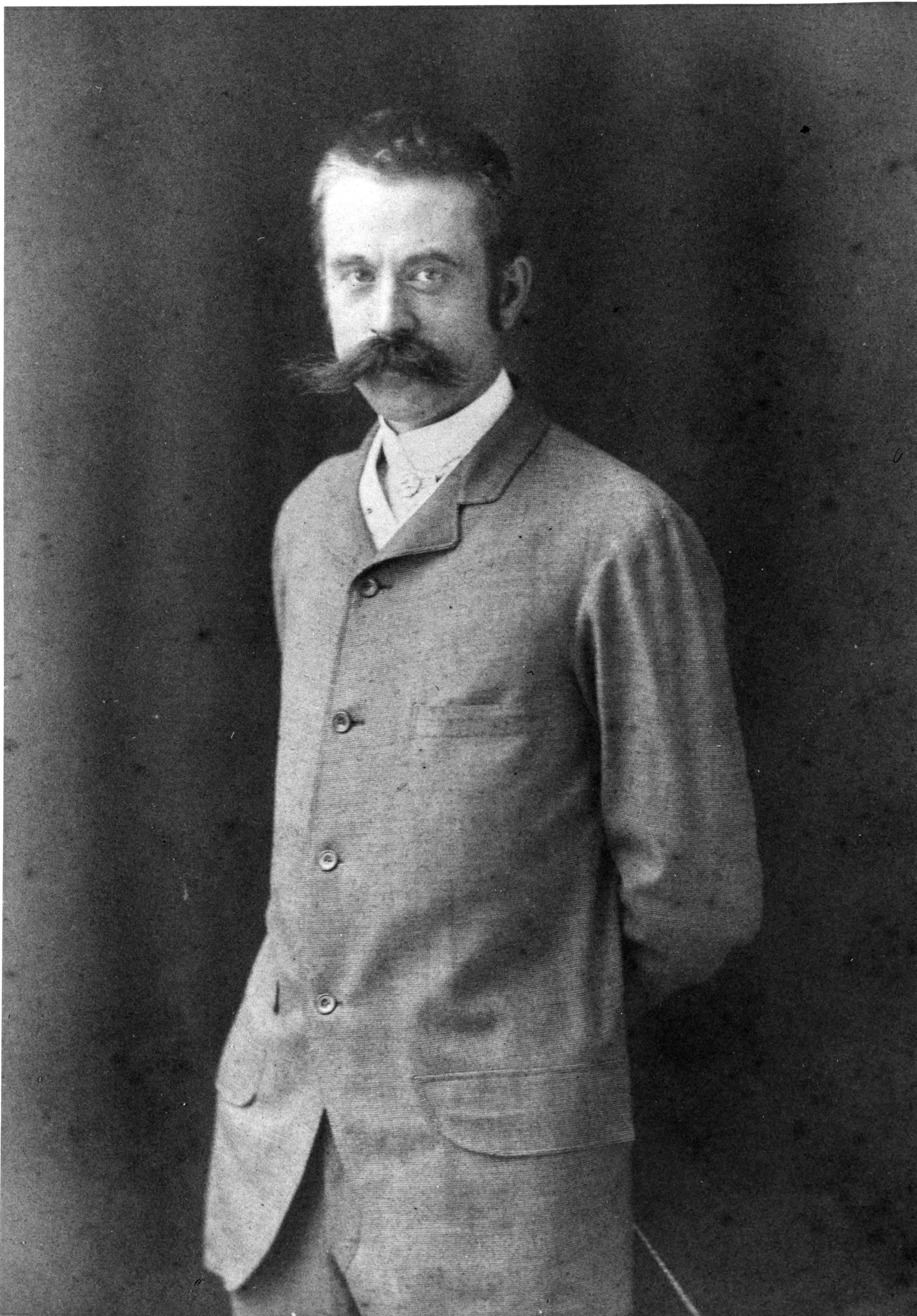 Wikimedia Commons Stanford White
Wikimedia Commons Stanford White
Nesbit had also attracted the attention of a more age-appropriate partner at while on stage, finally meeting him at one of White’s parties. His name was John Barrymore—yes, from that Barrymore family—and although he would later become known for his acting, at that point, he had broken away from the family profession and was trying to make his name as an illustrator. Despite the fact that this match wasn't nearly as unsavory as her previous one, Nesbit’s mother disapproved—Barrymore wasn’t rich enough to marry her daughter. Still greatly involved in Nesbit’s life, White egged her mother on in this regard, and as her benefactor, arranged to send her away to boarding school. Barrymore eventually proposed, but torn between two worlds, Nesbit said no. She was still only 16 or 17 by this point.
More men came calling, but none were suitable (i.e. rich) enough for her mother to approve—at least not while Stanford White was still paying their way. Nesbit continued to attend the boarding school he’d sent her to, perhaps finally enjoying a chance to study, as her father surely would’ve wished, instead of working to support her family. But another man lurked in the background—he’d attended 40 of her performances on Broadway, watching her from afar during the time that she’d been swept up in her illicit relationship with White and her brief romance with Barrymore. This man was rich enough for her mother’s approval. He was a social climber. He was younger than White—still more than a decade older than her, but a more appropriate match nonetheless. He was also deeply disturbed and mentally unstable. His name was Harry Kendall Thaw.
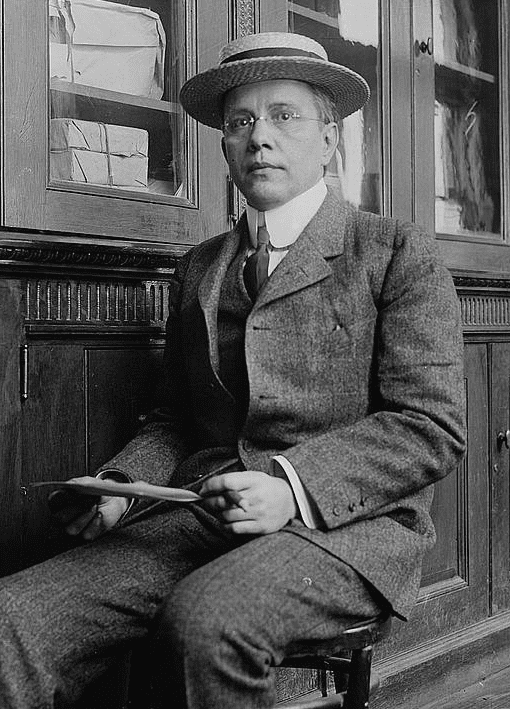 Wikimedia Commons Harry Kendall Thaw
Wikimedia Commons Harry Kendall Thaw
Years earlier, Evelyn Nesbit had acted as the embodiment of a Freudian concept in one of Charles Dana Gibson’s most well-known illustrations. Soon, she would become to be the object of Thaw’s twisted Freudian fixation. If Nesbit had been famous before, it was nothing compared to what was to come. The horrifically abusive union of Evelyn Nesbit and Harry Kendall Thaw would forever change her life—putting her at the center of one of the most infamous crimes of the era, and what subsequently came to be referred to as the “trial of the century.”
Want to read the rest of the story? Find Part 2 here.

